Homemade oil-free hummus is a classic 'must-have.' This favorite blend of chickpeas with a pinch of cumin, tahini, and no added oil is tastier than any of those store-bought spreads.
Shout out to hummus! It inspired me to make homemade tahini because some store brands add oil for processing. And it led to beetroot hummus made without tahini.
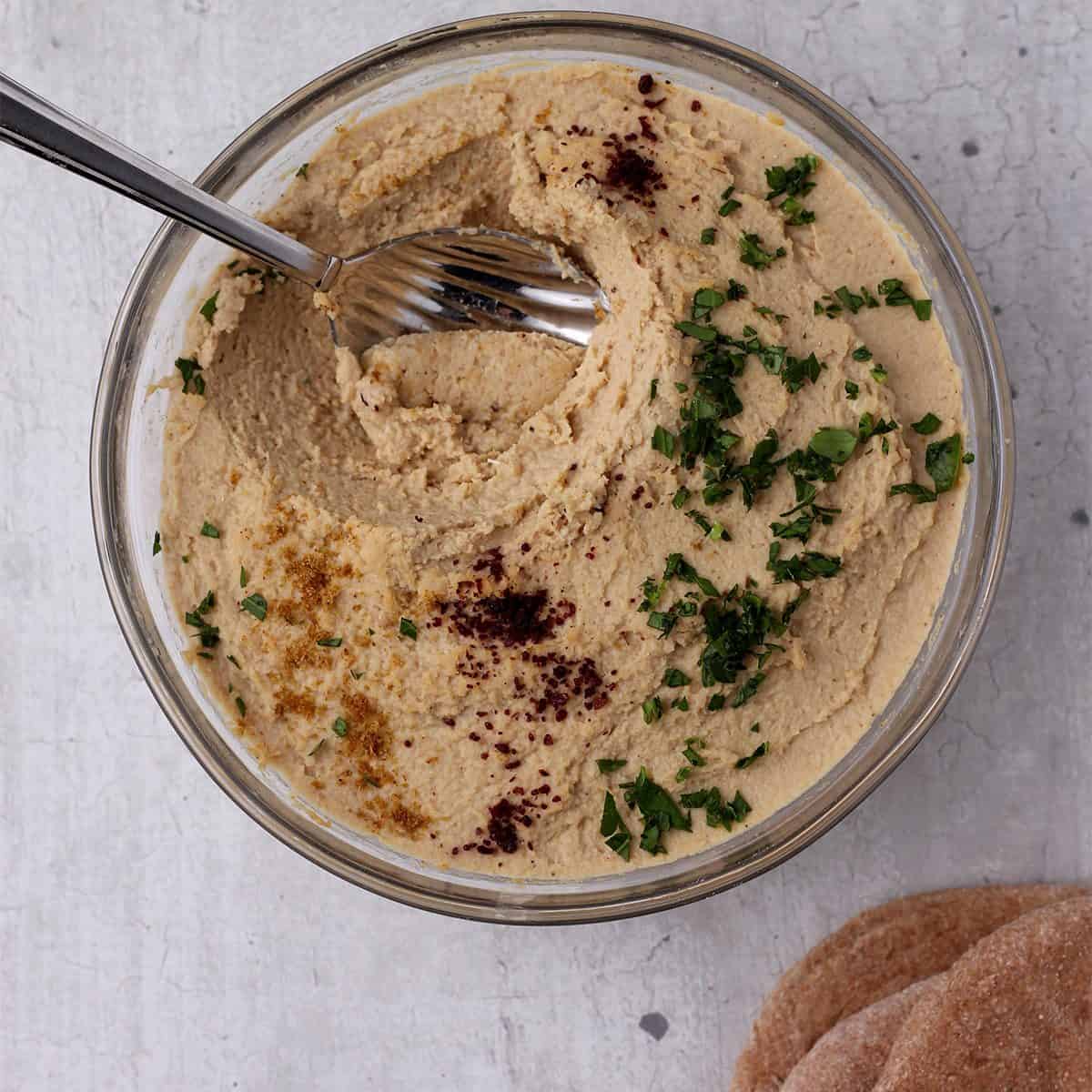
Table of Contents
What's New About Hummus?
So, what on earth can I add to the plethora of hummus recipes with this all-around classic? How about oil-free magic, a tried and true 'best' blending method, and superior flavor courtesy of a few ingredients?
Let's take all this on and get you to mouth-watering hummus in less than 15 minutes.
Hummus Among Us
Hummus (also known as "houmous," "humus," "hommus," or "hommos") in Arabic means chickpea. Yep, this classic Middle Eastern dip is all about chickpeas. Anything else, like one of our favorites, sweet potato dip, might remind you of hummus because it's got tahini, but it ain't hummus. At least, that's how I (and others) qualify it.
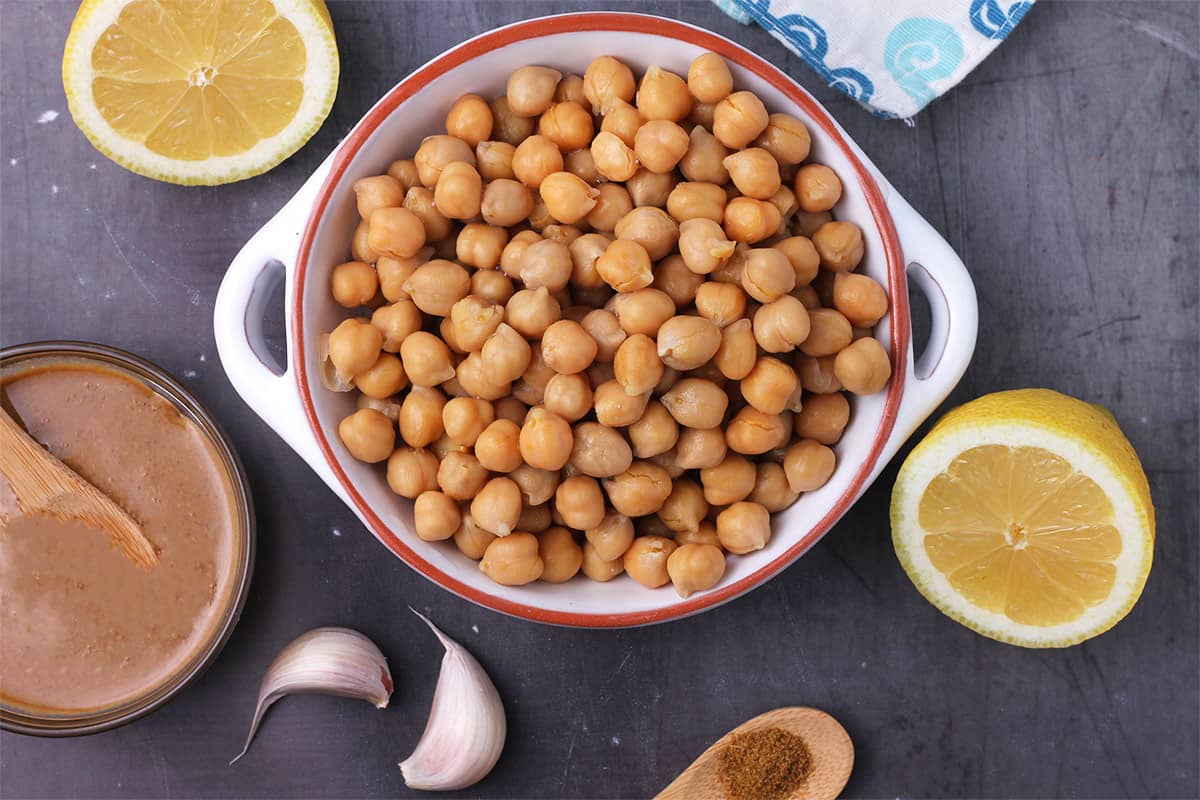
Chickpeas are the hummus super-ingredient – perhaps even more essential than tahini. However, I'd make a strong case that both are pretty important.
Please see the recipe card at the bottom of this post for the complete list of ingredients with measurements plus recipe instructions.
Should you peel chickpeas?
If you ask the Google world or wherever your gateway to the Internet universe begins, and you start reading the 'experts' advice about peeling chickpeas, the debate will become apparent. It's confusing.
My peel-or-no-peel advice is based on my own testing and the tons of chickpeas we consume.
In all those tons and the more to come, I never peel chickpeas. That's my bottom line.
I will agree that peeling the skins of chickpeas can yield a slightly creamier hummus. However, in my humble opinion, it isn't worth the time, patience, and fiber loss. I won't stop you from peeling if it's your heart's desire. Grab a chair, a plate for the skins, and a bowl for your final product. When I've tested this, it's taken about 15 minutes to peel a 15-ounce can.
Quality In, Flavor Out
All recipes benefit from quality ingredients. Hummus is no exception. Tahini, I point to you.
There can be a substantive difference between brands of tahini, a.k.a. sesame seed paste. This depends on the quality of sesame seeds used and if they are roasted.
Look out for brands that contain added oil. Those are usually the cheaper ones. Be sure to read the label when you buy it. Check if your tahini has added salt. This may impact your decision to add more.
If you want top-quality tahini, make your own. It's quality assurance supreme. Thus far, I've never found a better flavor than when I toast sesame seeds and process them until they are smooth. Sound intriguing? Pop over to my tips and tricks for making oil-free tahini.
Step-by-Step Instructions
I may not have grown up eating tubs of hummus, but I've made a commendable effort to compensate for the lost time. Along the way, I've learned a few tricks.
Believe it or not, it's all about the order of ingredients, and it goes like this:
1. In a food processor or blender, add the tahini, minced garlic, lemon juice, cumin, and a pinch of salt (¼ tsp.). Process until it's smooth. The tahini will get thinner and slightly lighter.
2. Add half the chickpeas and blend until it smooths out. Then add the rest of the chickpeas and continue processing. Taste the hummus for flavor, texture, and consistency.
3. To thin out and fluff up your hummus, add cold water. Start with a tablespoon at a time until you get the desired consistency. Each time you add a tablespoon of water, blend relentlessly. Then, test for consistency and add more. Likewise, if you like your hummus on the lemony side, you can add lemon juice in place of the water.
No Device?
Don't let that stop you. Sans electricity or a food processor, hummus can be made entirely by hand. That's how it was done in the 'olden times,' and we can recreate that.
Grab a small bowl and mix the tahini, lemon juice, cumin, garlic, and salt. In another bowl or a pestle and mortar, mash the chickpeas. Think of it as an opportunity to work out your aggressions, frustrations, or your biceps.
Add the tahini mixture to the chickpeas and keep on mashing. Add more lemon juice or cold water until it's smooth. That'll get you through a blackout or that camping trip in style.
Got hummus? Now what?
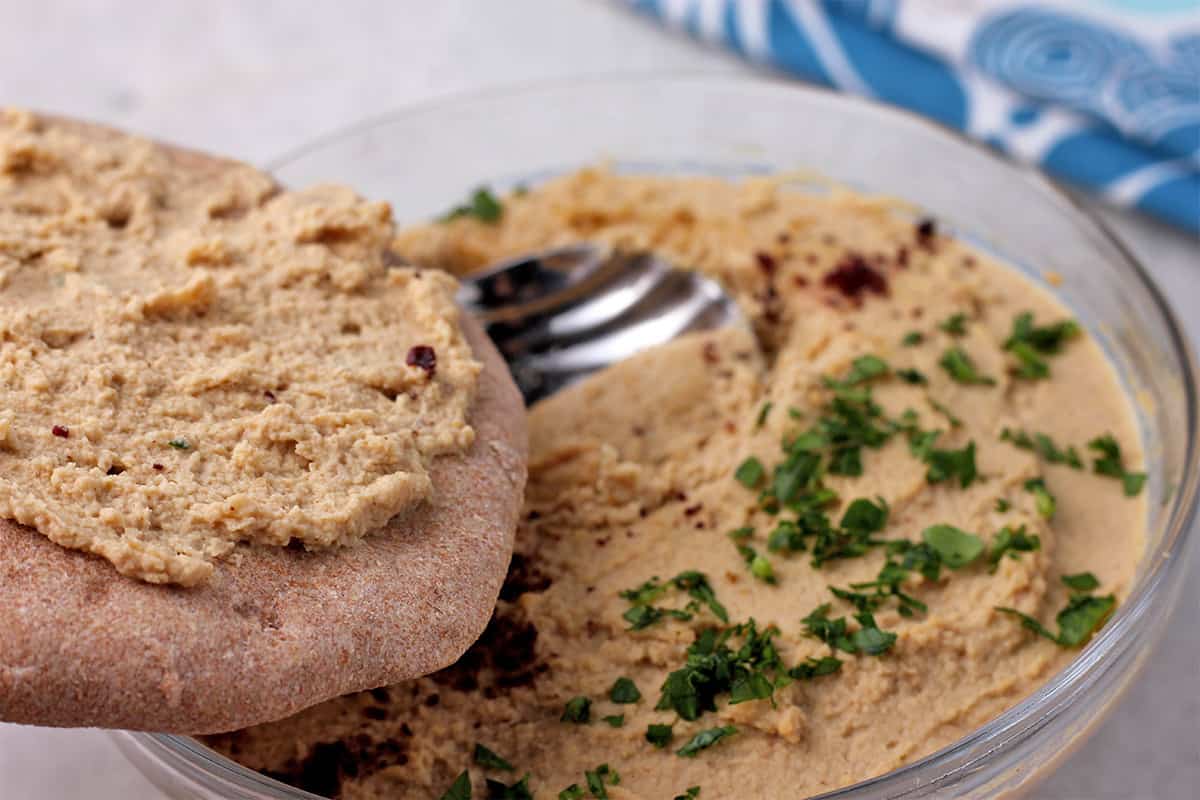
Take the spoon out of your mouth. You're done taste testing. It's time to serve up and even share your yummy hummus.
Take a moment to garnish it. Chopped parsley or cilantro go well with hummus. If you like extra spices, consider sumac for another level of tartness or paprika or cayenne powder or a bit of heat.
Serving Suggestions
Hummus is super versatile! Here are a few ideas for using your new favorite chickpea spread:
- Slather it on a potato flatbread or toasted homemade pita bread. Add any veggie you like. You can even top it off with a tricked-out dressing like classic lemon tahini or sriracha tahini. More tahini? You can't go wrong there.
- Pizza – of course! Who needs a pizza sauce when you can make Greek flatbread pizzas? Highly recommended!
- Stuffed portobello mushrooms, anyone? A super-easy dinner recipe that you'll adore.
- If you want an easy snack to encourage Buggs Bunny-level carrot eating, this hummus recipe is your answer.
Storage and Freezing
Store leftover hummus in an airtight container for 4-5 days. Give it a quick stir before serving.
I don't recommend freezing hummus. After thawing, I've found it too watery. There is also a flavor loss, so eat up!
More Vegan Dip Recipes
Do you have a question or recipe request or need a cooking tip? Leave a comment below or contact Denise. I’m here to help! If you want more healthy vegan recipes, please subscribe to my newsletter or follow me on Facebook or Pinterest for the latest updates.
If you make this recipe, please leave a ⭐⭐⭐⭐⭐ rating. It’s much appreciated!
👩🏻🍳 Recipe
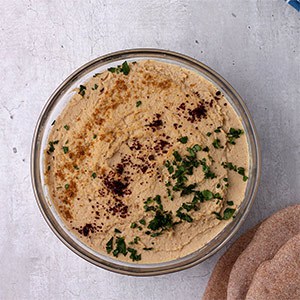
Oil Free Hummus
Rate this Recipe:
Ingredients
- ¼ cup tahini - sesame seed paste
- ¼ cup lemon juice
- ½ teaspoon ground cumin
- 1-2 cloves garlic - minced
- ¼ teaspoon salt
- 1 ½ cups chickpeas - 15-ounce can rinsed and drained
- 3-4 tablespoons cold water
Instructions
- Add the tahini, lemon juice, cumin, minced garlic, and salt to a food processor or blender. Blend until smooth.
- Add half of the chickpeas and continue blending for a few minutes.
- Add the rest of the chickpeas and blend until your hummus is smooth. Test the texture and flavor.
- Add cold water a tablespoon at a time (or substitute with more lemon juice). Blend after each additional tablespoon.
- Garnish with additional ground cumin, chopped parsley or cilantro, sumac, or other toppings if desired.
- Store hummus in a sealed container in the refrigerator for 5 days.
Video
Notes
- Nutritional information is based on ¼ cup per serving.
- Hummus is best if made with high-quality tahini. Look for brands that only contain ground sesame seeds and no additional oil. Or try making tahini with roasted sesame seeds.
- You do not need to peel the chickpeas for hummus. If you do, the hummus will be slightly creamier, so balance that with the effort and how anxious you are for all that yummy hummus.
- Ice-cold water helps make hummus lighter. You can also use ice cubes or chips. Be careful to add only a little, blend, and repeat until you get the desired consistency.
Nutrition
Nutritional information is an estimation only.


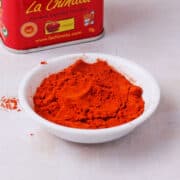
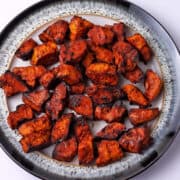

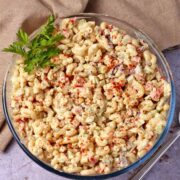
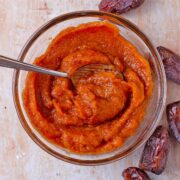

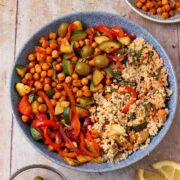
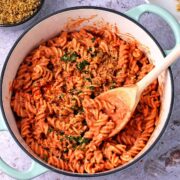
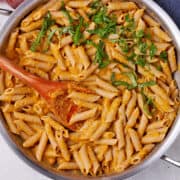
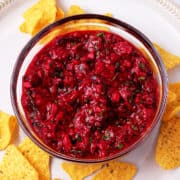

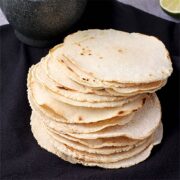
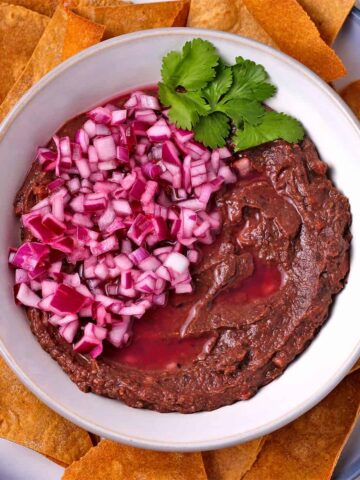
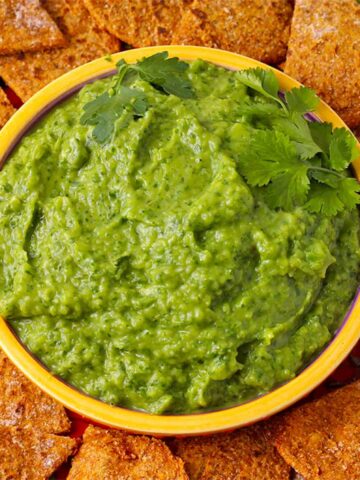

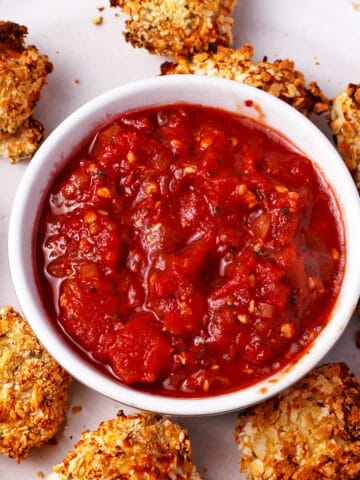
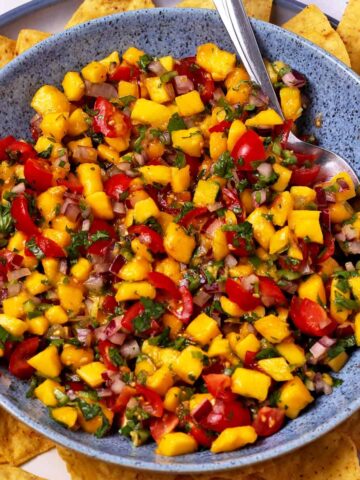
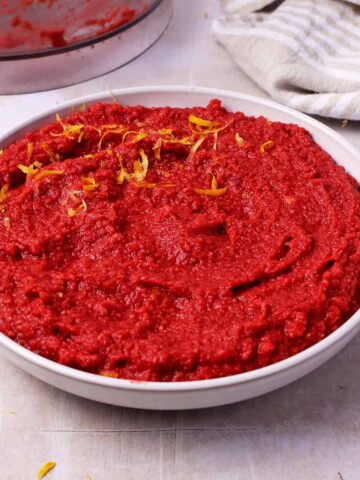
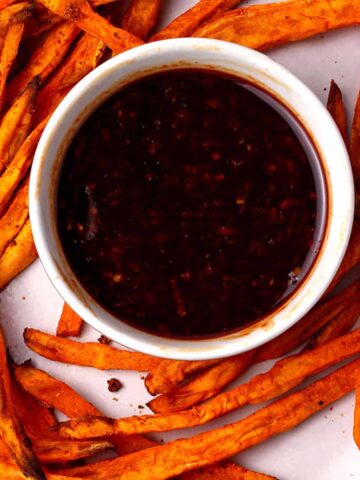
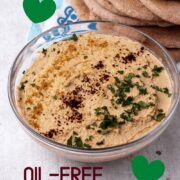
Rainey James
Hey Denise why don’t you use the aqua faba from the can of chic peas?
Denise
Hi, you most certainly use aquafaba. I find it a bit heavier in consistency; however, it's better if you chill it. You can even stick it in the freezer for a few minutes. Great idea. Thanks!